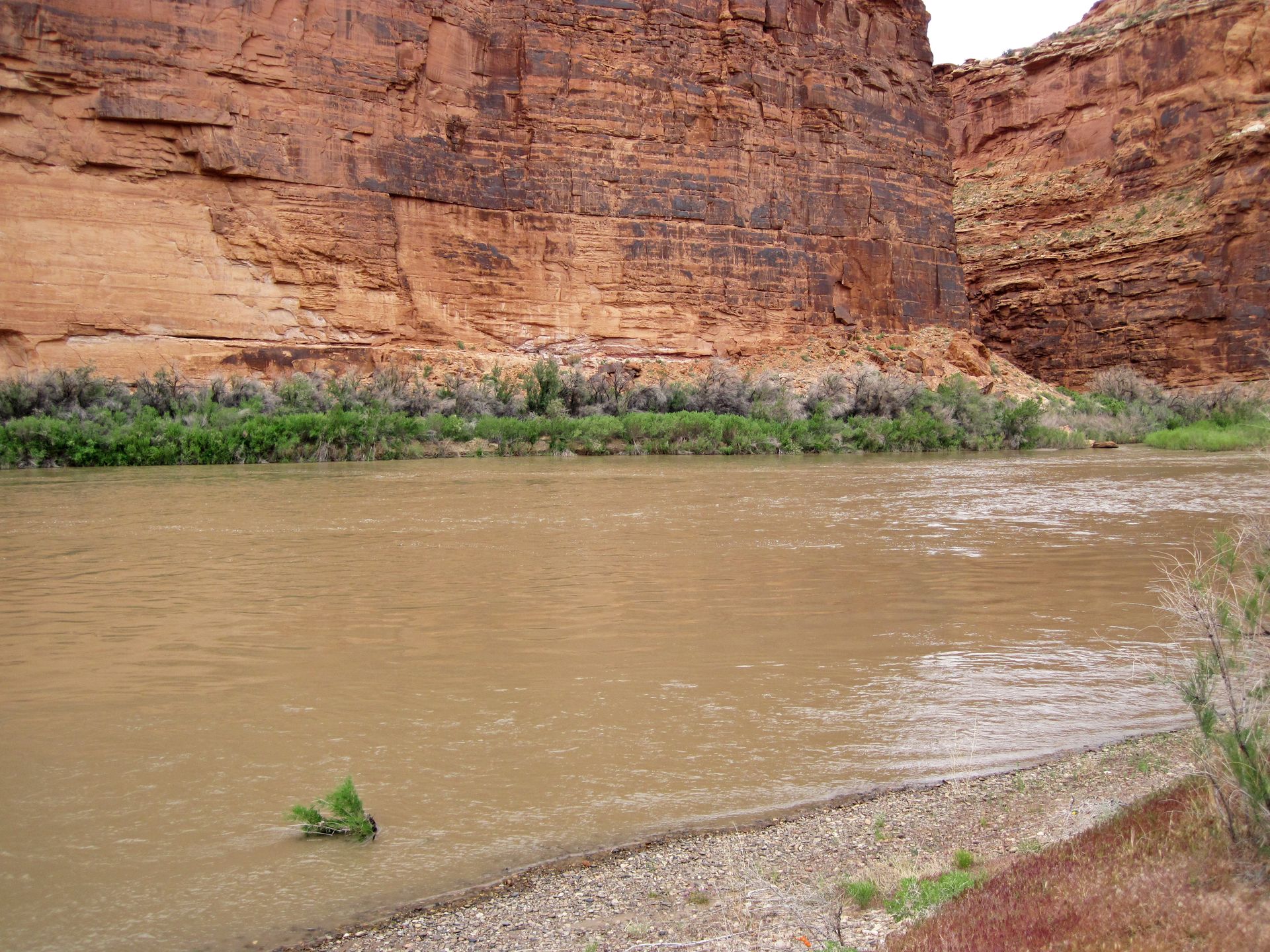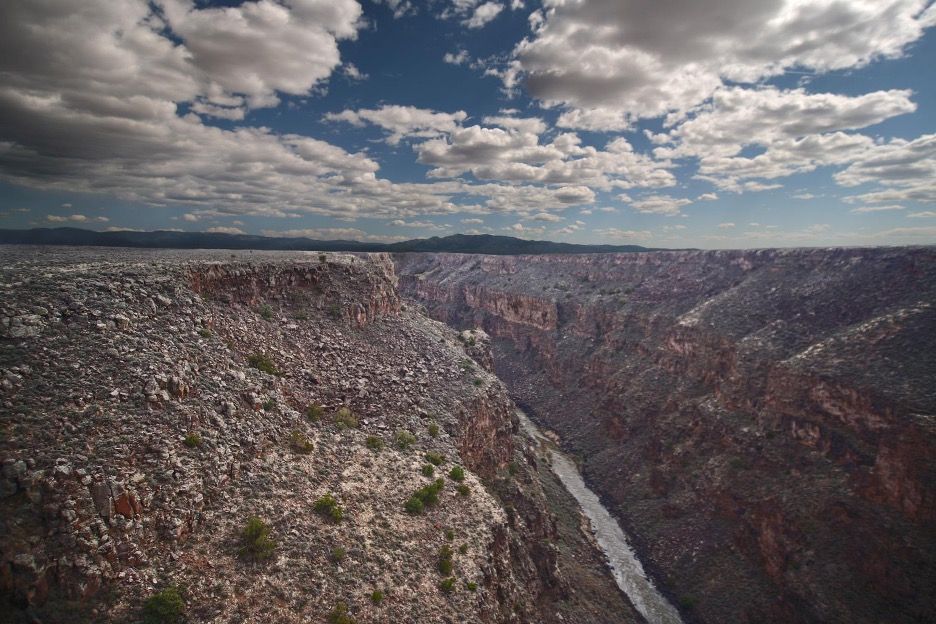Thousands of abandoned and orphaned mines dot the American West. They pose a danger to both public and environmental health, and responsible parties are difficult to find, differentiate, or hold accountable. Why do inactive mines continue to pose safety hazards and pollute our waterways? The laws in place simply don’t have teeth. The Gold King Mine wastewater spill in southwestern Colorado in 2015 was a good reminder of the scope of the problem of abandoned and orphaned mines and how our current regulatory framework falls short.
There are three laws that generally govern mining law in the United States: the 1872 Mining Law, the Clean Water Act, and the Comprehensive Environmental Response, Compensation, and Liability Act (CERCLA). These laws lack concrete measures to prevent mine spills from occurring as well as reliable methods to ensure that all mines receive the necessary attention in the case of a spill (or better yet, to prevent one). In addition, these laws can create liabilities and disincentives on parties who might otherwise be willing to come in and remediate the mine on their own. However, some states are turning towards a non-traditional form of legislation: Good Samaritan laws, in which citizens, companies, and organizations would be not liable in the case they decide to take on the task of cleaning up acid mine drainage.
The abandoned mine problem in the United States is striking. Specifically, hard rock mines (including metals like gold, silver, iron, copper, and zinc) are predominant in the West as a result of the discovery of gold and silver during the era of western expansion. Up until the 1970s, the federal government engaged in little oversight on mining across much of the West. During the mining era, there were few expectations about environmental safeguards, and as a result, historic mining operations often went largely unregulated. Before the 1970s, it was common for mining companies to abandon mine sites after mineral extraction was completed or no longer profitable. The land was often left exposed, with waste materials in piles or dumped into mine cavities and pits. At the time, mining companies had no requirement to restore mine lands to their original condition. Today, it is almost impossible to hold these mine owners financially responsible because records of original ownership have been lost and accountable individuals have long passed away. There are over 500,000 abandoned hardrock mine sites across the nation, and the cost for cleaning up these inactive mines is estimated to be between $33 and 72 billion dollars. Today, these abandoned mines are capable of polluting adjacent streams, lakes, and groundwater with high volumes of toxic waste. In doing so, contamination from spills has the potential to—and often does—harm marine ecosystems, poison local drinking water, and pose serious health risks to local communities.
What Laws Are in Place?
The Mining Law of 1872, or the General Mining Law, governs the transfer of rights to mine gold, silver, copper, uranium and other hardrock minerals from federal lands. Under the law, citizens may enter and explore the public domain, and if they find valuable mineral deposits, they may obtain title to the land through the Department of the Interior. The law has jurisdictional coverage over 270 million acres of publicly owned land, which is almost one-fourth of all land in the United States. In essence, mining companies are able to search for minerals without any authorization from any government agency. The law contains little to no environmental protections for using use of the land and it does not include any royalty or bonding provisions (to help fund cleanup in case of an accident). As a result, many have criticized the law for giving away public land to private companies practically for free, leaving the public to bear the burden for cleaning up the spills. Since there is no requirement to pay royalties or report extraction volume, the government does not keep track of the volume of hardrock minerals being extracted from federal public lands each year. Consequently, this aspect of mines is largely unchecked and has disparate effects.
But the issue of abandoned mines has not entirely been overlooked. In September 2017, Senator Tom Udall (Arizona) introduced legislation to reform the General Mining Law and address many of the above-mention criticisms. If passed, the legislation would help fund clean-up activities through fees and royalties. In March 2018, the House Committee on Natural Resources held a hearing on the issue of abandoned mines.
The Clean Water Act (CWA) is aimed at restoring and maintaining the chemical, physical, and biological integrity of the nation’s waters. The Act splits the responsibility to state agencies and some responsibility to the EPA to carry out the regulatory purposes. The Act requires would-be polluters to obtain a permit for any kind of discharge of a pollutant from a point source (such as mine waste) into the navigable waters of the United States. While the structure of the Act enforces a basic foundation for protecting water resources, one consequence of the permitting system is that parties who own or attempt to clean up mines will likely become subject to its extensive permitting requirements and face liability. This being said, when parties do attempt to clean up mines, their actions could still constitute a violation of the CWA. Under the Act, a party seeking to engage in cleanup activity would need a permit regardless of whether their actions aggravate or improve the water quality.
CERCLA allows for the cleanup of sites that are already contaminated with hazardous substances and pollutants. It is also referred to as the “Superfund,” due to the large fund that it created for cleanup of contaminated sites. CERCLA is intended to spread the cost of cleanup among responsible parties, and allows the government to undertake cleanup of contaminated property or compel private parties to undertake the cleanup themselves. Like the CWA, CERCLA creates potential liability for parties that might attempt to clean up abandoned mines, which usually takes form of lawsuits. Under 107(a)(4)(B), private parties can recover from a potential responsible party (PRP) for the cleanup costs they “directly incur.” Under this broad liability scheme, people who own property containing hazardous substances can be held liable for enormous cleanup costs even though they were not involved in any hazardous waste disposal activities. Even with some liability defense for certain types of innocent landowners and bonafide prospective purchaser, CERCLA has in effect discouraged the purchase and reuse of properties that may be contaminated. As a result, the overwhelming costs of cleanups (and potential liability) have been the primary restraining factors for people otherwise interested in reusing and restoring contaminated properties.
Good Samaritan Legislation
There has been no shortage of offered fixes to the problem of abandoned and orphaned mines, but one solution that has seemed to be getting more traction recently is the idea of Good Samaritan legislation. While potential liability under the CWA and CERCLA has discouraged parties from cleaning up abandoned mines or reusing and restoring contaminated properties, Good Samaritan legislation may provide new hope for parties who want to attempt to clean up mines but do not have the resources to take on the liability that might accompany cleanup efforts. These parties may include citizens, government agencies, nongovernmental organizations, and mining companies.
Pennsylvania implemented the Environmental Good Samaritan Act in 1999 and has completed fifty projects since. Those protected by this legislation include individuals, corporations, nonprofit organizations, and government entities. The Act protects them if they meet several requirements, including they that did not cause/create the abandoned mineral extraction land or water pollution, and that they provide equipment and/or materials for the project. The Pennsylvania Department of Environmental Protection (DEP) administers and reviews project proposals to determine project eligibility. While the Act has been used for mine reclamation in the past, DEP has also applied it to other environmental remediation projects, achieving success so far. In 2017, the Act has been applied to two oil and gas well projects, which are estimated to have saved DEP $60,000 to $85,000, in addition to administrative cost savings related to contract development and management. Three more projects are currently under review.
Recently, members of Congress have made efforts to enact something similar at the federal level. In 2016, three members of the Colorado delegation to Congress proposed the Good Samaritan Cleanup of Orphan Mines Act of 2016 with the help of environmental groups Trout Unlimited and Earthworks. The bill, ultimately, was not successful.
The practical reality of Good Samaritan legislation is that most parties who are interested in cleaning up the spills will not have the funds to effectuate a successful cleanup. While Good Samaritan laws appear to be a reasonable way to encourage cleanups, they are not enough to solve the multifaceted abandoned mine issue that has a variety of stakeholders- including the mining companies who are often let off the hook. This is why most environmental advocates tend to reject Good Samaritan proposals, as they distract from the bigger picture that the mining companies are causing the spills and are not taking responsibility to clean them up. While the EPA has issued guidance on Good Samaritan laws, few parties are willing to proceed with cleanup projects because the EPA has failed to engage in regulatory rulemaking and enforce law on the subject.
This being said, Good Samaritan legislation alone will not solve the abandoned and orphaned mine issue. Conservation groups have proposed increased liability for mining companies. At the state level, conservation groups like San Juan Citizens Alliance and Conservation Colorado have supported the
Thus, what seems to be the closest thing to an answer to the abandoned and orphaned mine problem is some sort of combination of many proposed solutions: Good Samaritan laws, imposition of royalties, creation of a hardrock reclamation fund, etc. At this point, the main question is where resources should be allocated and at what cost, especially amidst federal laws and agencies that often disagree on how and to what extent...” to protect the environment.
Sources
Jeffrey M. Gaba, Private Causes of Action under CERCLA: Navigating the Intersection of Sections 107(a) and 113(f), 5 Mich. J. Envtl. & Admin. L. 117 (2015).
Kelly Roberts, A Legacy That No One Can Afford to Inherit: The Gold King Disaster and the Threat of Abandoned Hardrock Legacy Mines, 36 J. Nat’l Ass’n Admin. L. Judiciary 361 (2016).
Jeffrey A. Kodish, Restoring Inactive and Abandoned Mine Sites: A Guide to Managing Environmental Liabilities, 16 J. Envtl. L. & Litig. 381, 381(2001).
Bart Lounsbury, Out of the Holes We’ve Made: Hardrock Mining, Good Samaritans, and the Need for Comprehensive Action, 32 Harv. Envtl. L. Rev. 149 (2008).
United States v. Copar Pumice Co., 714 F.3d 1197 (10th Cir. 2013).
American Mining Congress v. United States Envtl. Protection Agency, 965 F.2d 759 (9th Cir. 1992).
Committee to Save Mokelumne River v. East Bay Municipal Utility Dist., 13 F.3d 305 (9th Cir. 1993).
Hardrock Mining, The National Wildlife Federation, https://www.nwf.org/Our-Work/Waters/Hardrock-Mining (last visited Apr. 5, 2018).
U.S. Gov’t Accountability Office, Mineral Resources: Mineral Volume, Value, and Revenue, (2012), https://www.gao.gov/assets/660/650122.pdf (last visited Apr. 5, 2018).
Matthew Brown, EPA drops rule requiring mining companies to have money to clean up pollution, Chi. Tribune (Dec. 1, 2017), http://www.chicagotribune.com/news
/nationworld/ct-epa-mining-pollution-20171201-story.html (last visited Apr. 5, 2018).
Brian Handwerk, Why Tens of Thousands of Toxic Mines Litter the U.S. West, Smithsonian.com, (Aug. 13, 2015), https://www.smithsonianmag.com/science-nature/why-tens-thousands-toxic-mines-litter-us-west-180956265/ (last visited Apr. 5, 2018).
Van Zyl, D., Sassoon, et. al., Mining for the Future: Main Report (2000).
Claudia Copeland, Cleanup at Inactive and Abandoned Mines: Issues in “Good Samaritan” Legislation in the 114th Congress, (Nov. 25, 2015) https://fas.org/sgp/crs/misc/R44285.pdf (last visited Apr. 6, 2018).
Dep launches program to cap abandoned wells, The Bradford Era (Jan. 31, 2018), http://www.bradfordera.com/news/dep-launches-program-to-cap-abandoned-wells/article_8310642a-061b-11e8-ad41-cb2aff000d41.html (last visited Apr. 15, 2018).



